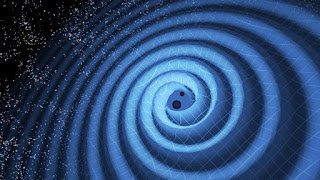Space Tourism
On the 12th of April 1961, Yuri Gagarin becamethe first ever human to venture into space. On that day, he saw the world in a way thatno human had ever seen before. Since then, just 560 people have been into space, most of them being trained astronauts that spent years preparing for their flights. But when will the rest of us get a chanceto visit space? And what will we do when we get therthere ? Now we’re going to look at thefuture of space tourism. We’re also going to look at the private astronauts that have paid to go into space and how reusable rockets could help to kick start the space tourism industry.
Since the beginning of spaceflight, only 7 people have paid to go to space. In 2001, American entrepreneur Dennis Titopaid $20 million for an 8-day trip to the International Space Station. At the time, NASA thought it was inappropriate for tourists to go to space, so they refused to train him. Instead, he partnered with the Russian’sand took a ride on Soyuz mission TM32 along with two Cosmonauts. He recalls the spectacular moment when helooked out of his window for the first time and saw the curvature of the Earth againstthe darkness of space. Dennis spent a total of 8 days on the ISS where he performed various experiments and admired the incredible view of Earth. So far, the amount of paying visitors to spacehas been very low, but all that could change in the near future. With multiple private space companies developing reusable spacecraft, the cost of spaceflight is starting to lower dramatically.
Blue Origin are developing their ‘New Shepard’ spacecraft specifically for tourism flights into space. This capsule has 6 seats with the largest windows ever seen in a spacecraft. During these flights, the rocket will accelerateup to 100km in altitude before cutting off the engine and releasing the capsule. At this point, the capsule is essentiallyin free fall but still travelling upwards to its highest point. Passengers inside the capsule will be able to leave their seats and experience the effects of weightlessness. A few minutes later, the passengers will returnto their seats before the capsule enters the atmosphere and the effects of weightlessnessdisappear. Although these flights will be extremely short,the reusability of this rocket could give customers a chance to experience the wondersof space from a price as low as $200,000. Although this will still only satisfy the super rich, it’s a step in the right direction if spaceflight is to ever achieve the price and safety standards of airliners. But as the industry grows and companies competeto develop the cheapest ride into space, these prices could fall even more.
If each space vehicle can be reused multipletimes before needing serious refurbishment, the customer will only need to cover the cost of crew and fuel. An airplane can fly multiple times per day,and conduct tens of thousands of flights over its lifetime. If a rocket can reach even a fraction of those numbers, space tourism could be opened up to the wider public. But developing a cheap ride into space isonly half of the problem. The cost of actually living in space is stillan incredibly expensive luxury. In order to run the International Space Stationit costs NASA around $4 Billion each year. After years of avoiding commercialization, NASA recently opened up the ISS to paying customers. But with the extremely high running costs,the ISS is still just a destination for the wealthy. In order to have food and air during yourstay on the ISS, it will cost you $22,500 per day. Once everything else like power and wifi isincluded, a one night stay onboard the ISS will cost you at least $35,000. In order for space tourism to become a reality,the cost of building and operating a habitat in space will need to be drastically reduced.
Space Technology startup ‘Bigelow Aerospace’ are developing large inflatable space station modules. These modules can be packed into a rocket’s payload bay and inflated into a much larger size when in space. The idea is that large expandable modules like these could be the perfect foundation for space hotels. Currently, the ISS requires an enormous teamof people working 24 hours a day just to keep the station running. Bigelow Aerospace are hoping to simplify the operation of their modules and reduce the running cost. And since they are easier to manufacture and cheaper to launch than traditional space station modules, they could reduce the cost of livingin space all together. So altho byugh the idea of space tourism may seem like a distant fantasy. The incredible advancements in reusable rocketsand space modules could soon open the door for a brand new generation of explorers.
























































